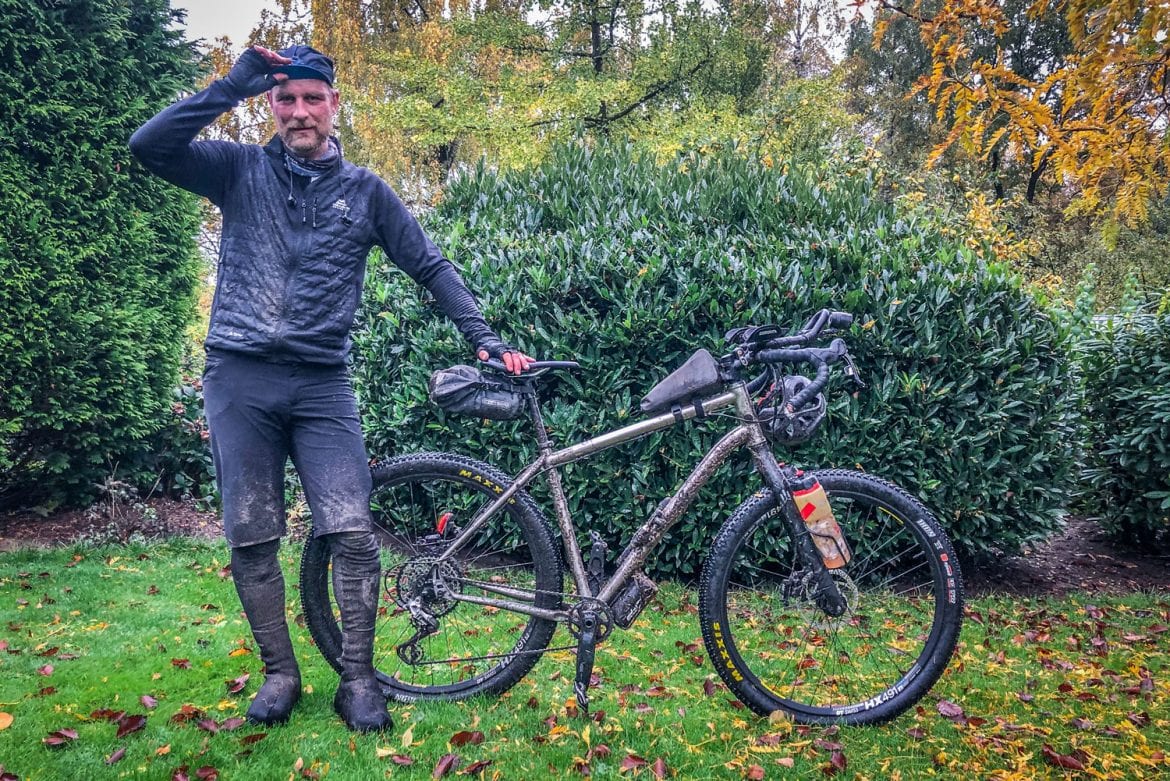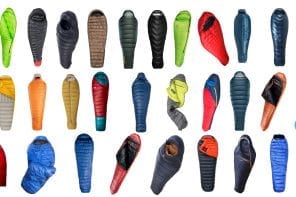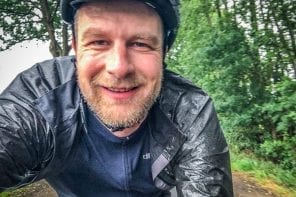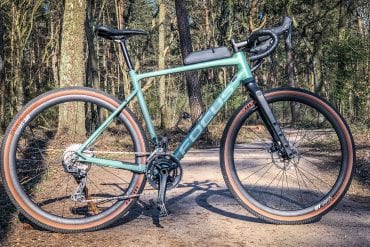Recently I listened to an episode of Johanna’s Wonderful Bicycle World Podcast, in which she took up questions from her listeners. One of them was about staying warm and dry on the road.
This is indeed a challenge for many cyclists, which is why I would like to share my experiences and tips with you.
There is no universal answer or solution. This simply has to do with the different way of riding and because each person has a different cold and wet sensation. In addition, the conditions are also different, depending on whether one is on a bike tour and therefore equipped with more time and space. Or one is sporty and in race mode on the road, which means a much greater challenge.
Warm & dry on a bike tour
When it comes to the weather, a bike trip does have its advantages: If it rains, you take a break and shelter. If it’s snowing, maybe you don’t ride at all. If it’s cold and wet, you just take the extra softshell, hardshell rain jacket and gloves out of the pannier.
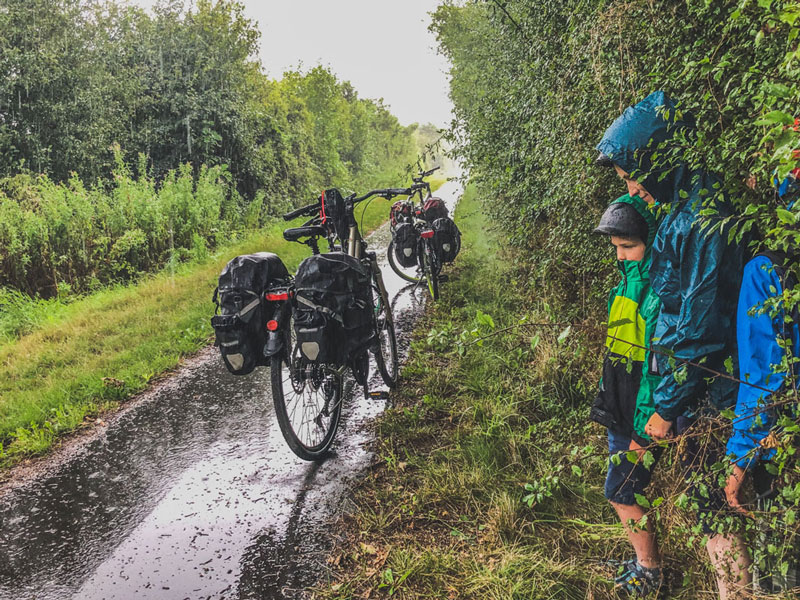
It does not matter whether it is the bike tour through the world, or the bikepacking round through the nearby countryside – who rides more for pleasure and desire, also has fewer problems with staying warm and dry. Simply also because the weather must not be “conquered” and in case of doubt also a “warm” campsite or hotel room are available. And above all: because time is not a really decisive factor.
But even on such bike tours there can be moments where you have to resist wind, weather and cold for a few hours away from infrastructure. I’m thinking especially of my tour to the North Cape in 1995, the ride through the Himalayas in 1998, my circumnavigation of Iceland in 2013 and my ride on the Careterra Austral in Patagonia in 2017.
On the way back from the North Cape, we, my bike touring buddy Stephan at the time and I, had 12 days of rain and quite low temperatures (north of the Arctic Circle) in Finland. And by far not the functional stuff available today. What saved us back then were windows of time each morning and evening when it wasn’t raining.
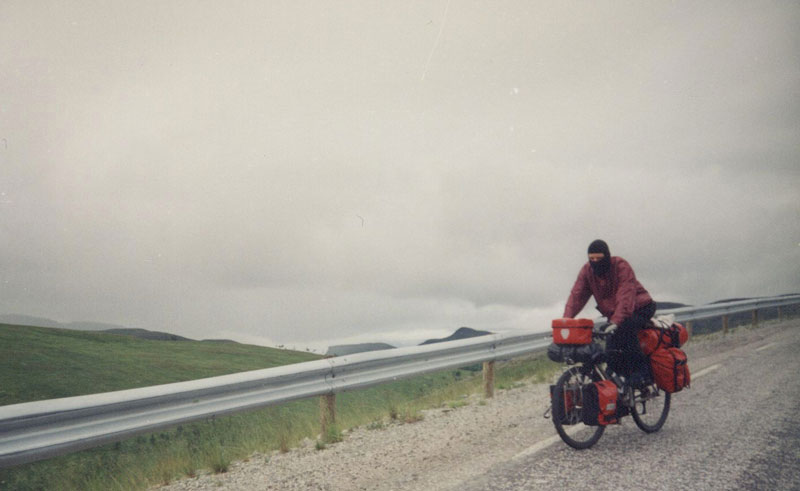
In the morning around 7:30am we used the time to pack up and ride for another 30min while being able to dry our wet stuff on the bike. In the evening the same and to wipe out the wet inner tent and with some wind still be able to dry the clothes on the body and the rain gear. This often worked, but not always. Therefore we made as often as we could, short stops at gas stations to get there with the hand dryer our things dry.
In the Himalayas it looked different: Snowstorm at 5,000m and of course no infrastructure far and wide. As long as it was only snow, it went quite well. It falls off and doesn’t really make you wet. But it was cold and we were sweaty from riding uphill. Here helped then only the hardcore solution: Jacket open, by the wind try to dry something inside, then change shirt (I’m still with a T-shirt from NewYorker for 5 euros, that then later fell apart), jacket again over and off into the tent and sleeping bag.
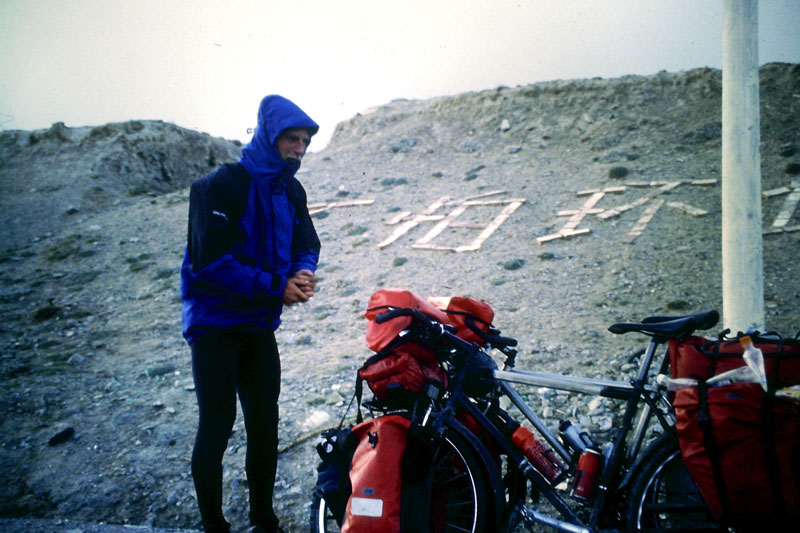
And there then dry by body heat. Because even in the Himalayas is sometime different weather and as soon as the sun shone and the wind was lighter, we dried man, tent and sleeping bag. Taking the time to do this is especially important in such remote regions, because the equipment is also fundamentally decisive for the success of a tour.
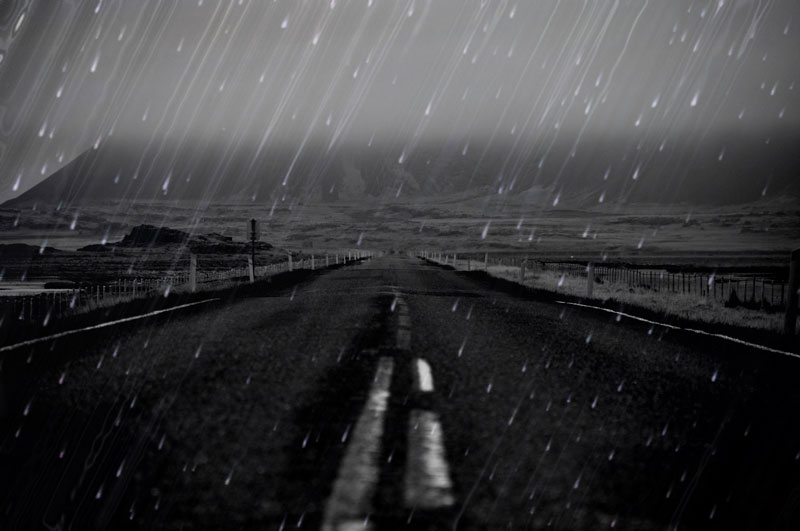
During my circumnavigation of Iceland, the rain had me wrapped up for two days without interruption. That was already quite unpleasant, but I could dry at night my stuff in the tent (I had a 2-person tent) a bit. And at the end of the second day I finally came to a campsite that had a dryer. So I threw all my clothes and my shoes in there and let them dry for two hours.
Many years later, I was traveling alone in Patagonia on the famous Careterra Austral. The weather in this region is – let’s say – quite unstable. So within a few hours you can experience pretty much everything there is to weather: Snow, hail, sun, warmth, rain, cold and storms up to hurricanes. I actually had pretty good weather, but definitely some days where it was cold and wet and I couldn’t really get out of my rain gear.
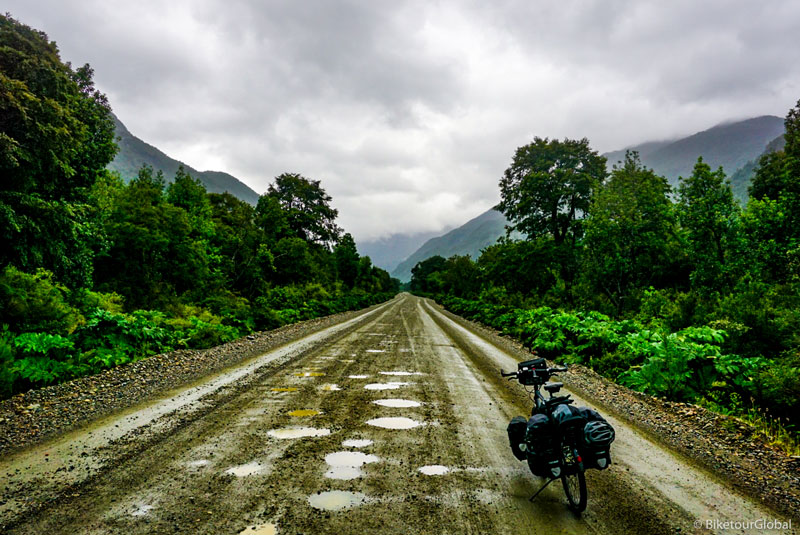
My strategy here was the same: Drying in the rain breaks by the wind. And in the evening out of the wet clothes, change clothes and then try to dry the wet things in the wind, in the outer tent or – if not quite so wet – in the sleeping bag. Since in Patagonia wind is a big topic, I also had hardly problems to dry my things and me within short time to blow. Even if now and then interrupted by rain or snow. And basically I try to reduce my speed before the end of the riding day and air out at the same time to not get too sweaty going into the rest of the evening. That usually works out pretty well.
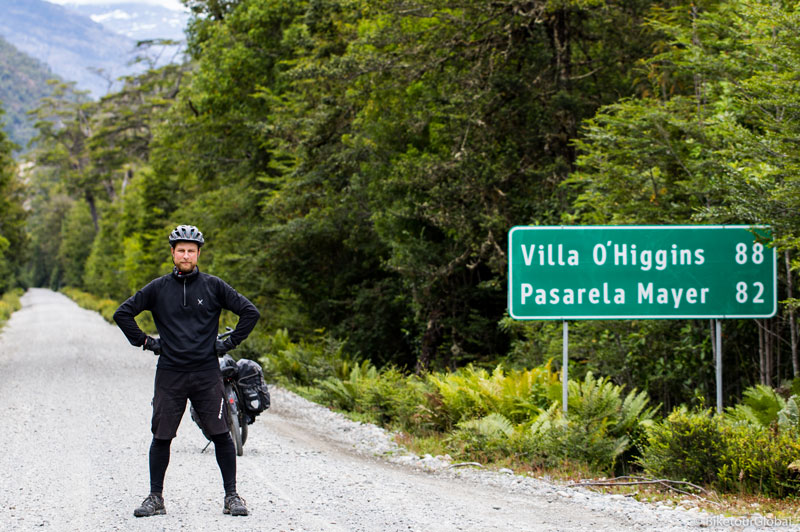
But of course there were always several hours or sometimes two days where everything didn’t work and I had to keep moving in the wet stuff so as not to cool down and then had to overcome myself in the morning to put on the clammy stuff again.
Warm & Dry for Sporty Bikepacking & Racing
If the time plays a role, then weather and temperatures get of course another meaning. It does not even have to be about the front positions, but about a grace period for a check point or a maximum total time of a race, which one may not and would like to exceed. So a rain front can quickly cause stress and freezing often means loss of performance and can lead to health problems.
I can definitely benefit from my experiences from bike touring here, but I have gotten used to a different way of dealing with the elements over the last few years. From my point of view it is 50% the mental handling of weather & cold and 50% the right equipment that brings success.
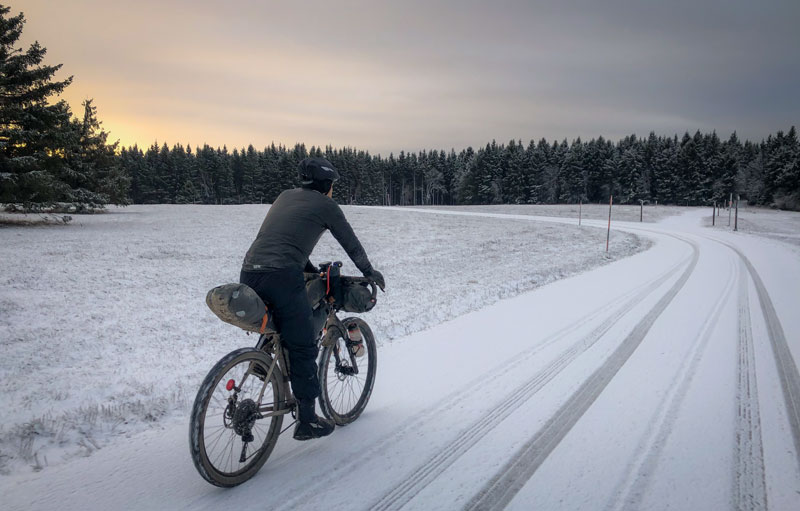
So I have consciously trained in bad weather and made tours including overnight stays. Because there is often no time to dry clothes or warm up during races. You need the right mental mindset (you shouldn’t care about the weather at all) and the experience in using the right clothing combination and in enduring when it gets wetter or colder than planned. The biggest challenge, however, is: How do I keep from getting chilled when I finish the day sweaty, want to take a break, or need to get some sleep? And how do I stay warm and dry my clothes so that it can continue dry after a few hours?
In the race or sporty bikepacking it depends above all on how minimalist you can be maximum on the road. That is, there is not much room to carry spare clothes. Therefore, it requires an experienced and well thought-out clothing strategy to stay dry and warm – no matter what. This was still quite easy in Morocco at the Atlas Mountain Race, where it tended to be dry and temperatures ranged from -3 to +30 degrees. In Kyrgyzstan it will be a different story, with a temperature range from -15 to +40 degrees and the expected weather with storm, rain, snow and heat. So you need a T-shirt more to get along well with very little for 14 days.
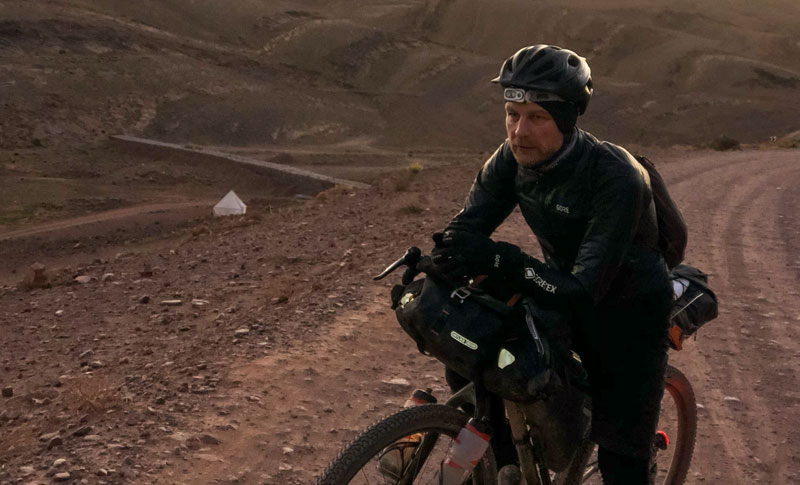
I am not an ultra-endurance rider myself, but James Marc Hayden, who I hold in high esteem, is one who has had a lot of experience in very demanding ultra-races. He has published two articles, one on the subject of wet weather protection https://www.jamesmarkhayden.uk/knowledge/keeping-dry and the other on the subject of staying warm https://www.jamesmarkhayden.uk/knowledge/keeping-warm .
He describes very nicely the everyday life at races, where it is about just getting through well and that the right equipment is crucial. His experiences and tips are very helpful: onion system to reduce sweat and waterlogging while riding, make the right tactical decisions in bad weather, plan for spare clothes and waterproof equipment and be prepared with his stuff for the respective conditions.
How do I keep dry and warm on the road?
Just this week I had exactly this challenge again: I was on an Overnighter and cycled 65km to my overnight place for it. Of course I was sweaty when I arrived. At the moment the temperatures are still very low in the evening and then especially at night (during the night I had -7 degrees). When I was cycling it was around 10 degrees and, in order not to be too wet from sweat, I rode with only a merino undershirt, merino cycling jersey and arm warmers. That was just right to not freeze despite the headwind and at the same time not sweat too much, as would have been the case with a jacket over it. (And of course I also had pants on 🙂 )
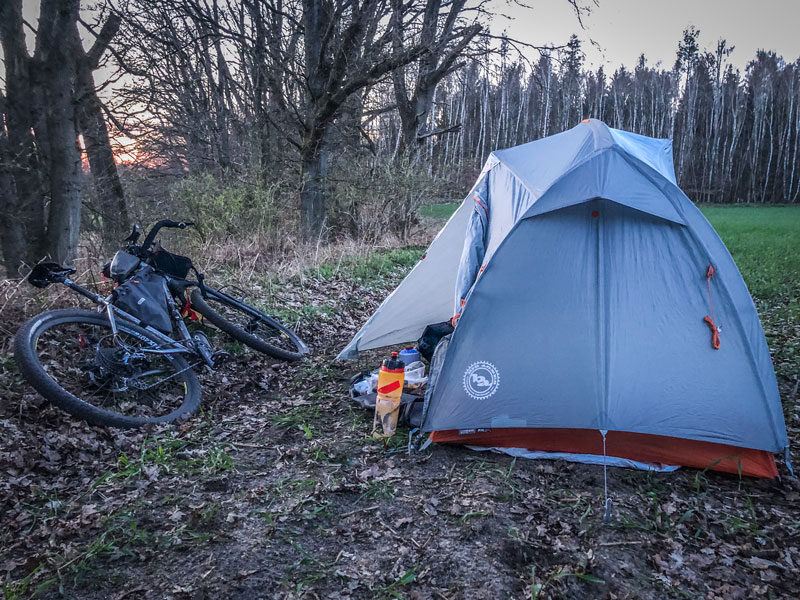
Arrived at the Overnighter Camp, I immediately put on a warm jacket (Polartec Alpha), set up my tent and made myself something to eat. In this time I dried by myself and I was warm at the same time. I didn’t even have to put on the down jacket I had with me. The temperatures were then around the freezing point. I therefore quickly hunkered down in the tent, where I swapped my cycling gear for merino pants (long) and a merino longsleeve. The bike shirt and the bib came right into the sleeping bag, also because I already suspected that the next morning will then frosty.
So you can already see that the right clothes and equipment are crucial. But it is a long way to this, because the personal temperature sensation is highly individual. So you have to try out a lot until you find your personal combination. In addition, there is no one right jacket, shirt or pants that will keep you warm and dry no matter what.
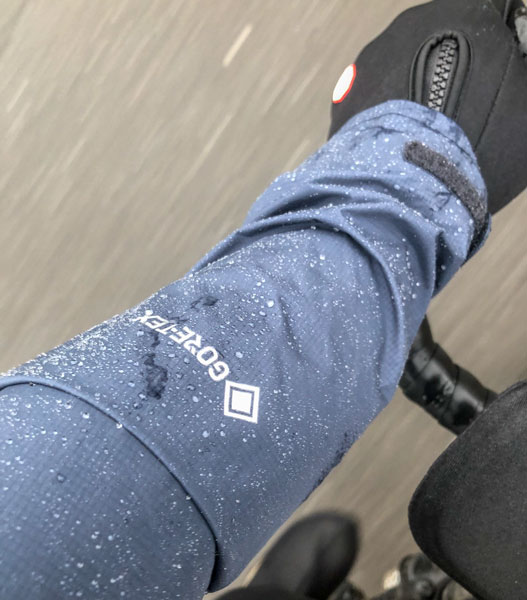
But I definitely see progress here and we are already pretty close to sustainable in the sense of solutions that can be used and work for a long time.
- Gore Shakedry is such a material and also Gore Active and Packlite make it more and more possible to be able to protect yourself well against wetness and wind over a long period of time with high breathability and function.
- With Polartec Alpha is a very interesting material that weighs little and brings tremendous warmth and insulation performance.
- And Merino is a wonderful fabric (Muelsing-free, of course) that is relatively odorless and still warms even when wet. It could dry faster, but that’s fine.
An important – and often underestimated – point is also proper nutrition. Eating regularly is essential for the body to produce enough energy to stay warm. Too little “fuel” makes you more likely to freeze, and then even the warmest clothes won’t help. Therefore, I pay even more attention at low temperatures to eat enough and energy-rich. Otherwise the best combination of clothes is useless.
What do I wear?
When I am on the road, I plan in the onion principle. Whether I’m competing in the Silk Road Mountain Race or camping in the woods in Bad Segeberg, I wear the following (depending on the season, of course):
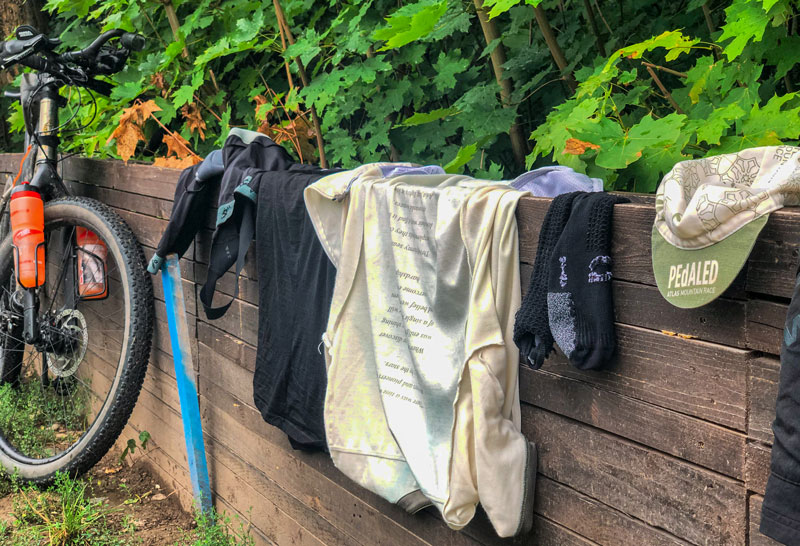
– Sleeveless merino undershirt (Pedaled & SkinFit)
– Bib (Pedaled & Santic)
– Leg warmers (GripGrab thick or thin)
– Cycling jersey (Pedaled Odyseey)
– Arm warmers (GripGrab)
– Merino long sleeve for sleeping and as a spare (Icebreaker)
– Merino pants long for sleeping (Icebreaker)
– Normal socks (Skinfit)
– Thermal socks (Falke)
– Waterproof socks (Sealskinz)
– Alpha Jacket (Pedaled Odyseey)
– Rain/Wind Jacket (Mountain Equipment Skardu or Gore Shakedry C7))
– Down jacket (Decathlon)
– Cap & thicker hat
– Gaiters thick or thin (Vaude)
– Rain pants (Gore Packlite)
– Gloves: fingerless, long-finger thermo, lobster and waterproof overgloves (Decathlon)
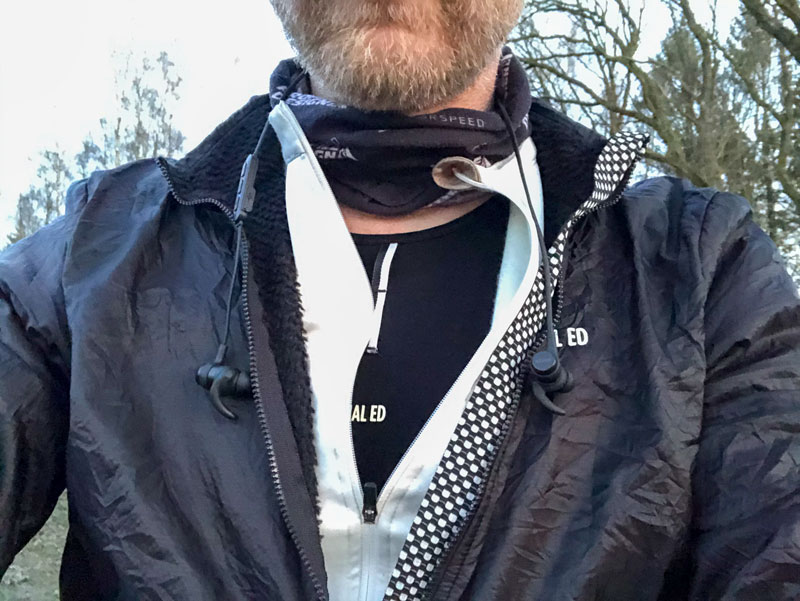
When it rains, the equipment is once again particularly in demand. I choose my clothes based on being able to ride in the rain as long as possible. On a classic bike or bikepacking tour, this is much more relaxed, as well as a race. Because at some point, any clothing is done and then you have to be able to deal with the moisture. And the higher the effort, the more it usually “rains” inside more than outside. Therefore, I rely here on clothing that has a high breathability, with equally high waterproofness, and also dries quickly.
Gaiters are for me an essential part of the “fight” against cold and wet. I ride many months a year with gaiters and consume per year also at least one pair. At the moment I rely on Vaude thermal gaiters. It is important, however, that you give the shoe / foot some air from time to time, because the sweat makes after a few hours also the gaiters damp from the inside and thus the shoe and the socks. And: in the rain, never pull the gaiters over the rain pants, but always let the rain pants protrude over the gaiters. Otherwise it rains directly into the gaiters. I have experienced this myself.
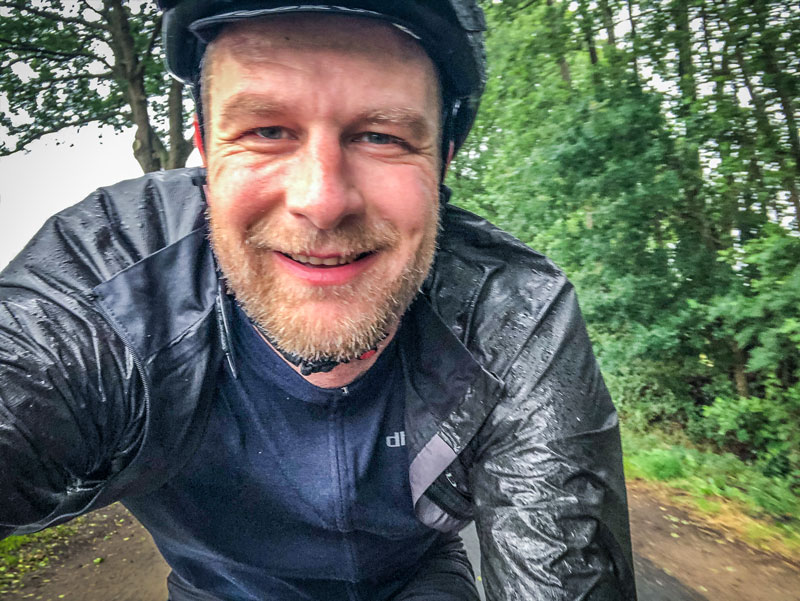
In addition, I can recommend overgloves as wetness protection of the gloves. They weigh nothing and are usually much longer tight than all other gloves. Neoprene is not so optimal, because that is waterproof, but the sweat then stands in the gloves and they are also cold. I made this experience on Iceland with neoprene socks and gloves.
If I sometimes with wet rained clothes my camp open, then pants and jacket usually come into the outer tent. What I have underneath is then assessed by degree of wetness and either it stays on and then dries by body heat, or comes in the tent on the ceiling or next to the sleeping bag. And in the morning hours then in the sleeping bag, so that it is not too uncomfortable, when dressing.
In cold temperatures, I have had very good experiences with the Polartec Alpha jacket. Underneath I often need only a bike shirt and if it is very cold still a long-sleeved merino shirt and then I can ride with it.
But cold and rain are not all days….
Basically, you can assume that it is not permanently raining or cold. And very few people do tours in weather conditions or physical demands that are so demanding over a long period of time. And often the questions and concerns about this are then more theoretical.

At some point there is sun again, it gets warm and then you can dry everything. And you can always take a break and wait, because that is also part of a bike trip or even a Races and simply belongs to it.
But there are definitely more “hacks” and experiences on how to stay dry and warm on the road. Feel free to share your tips in the comments.

